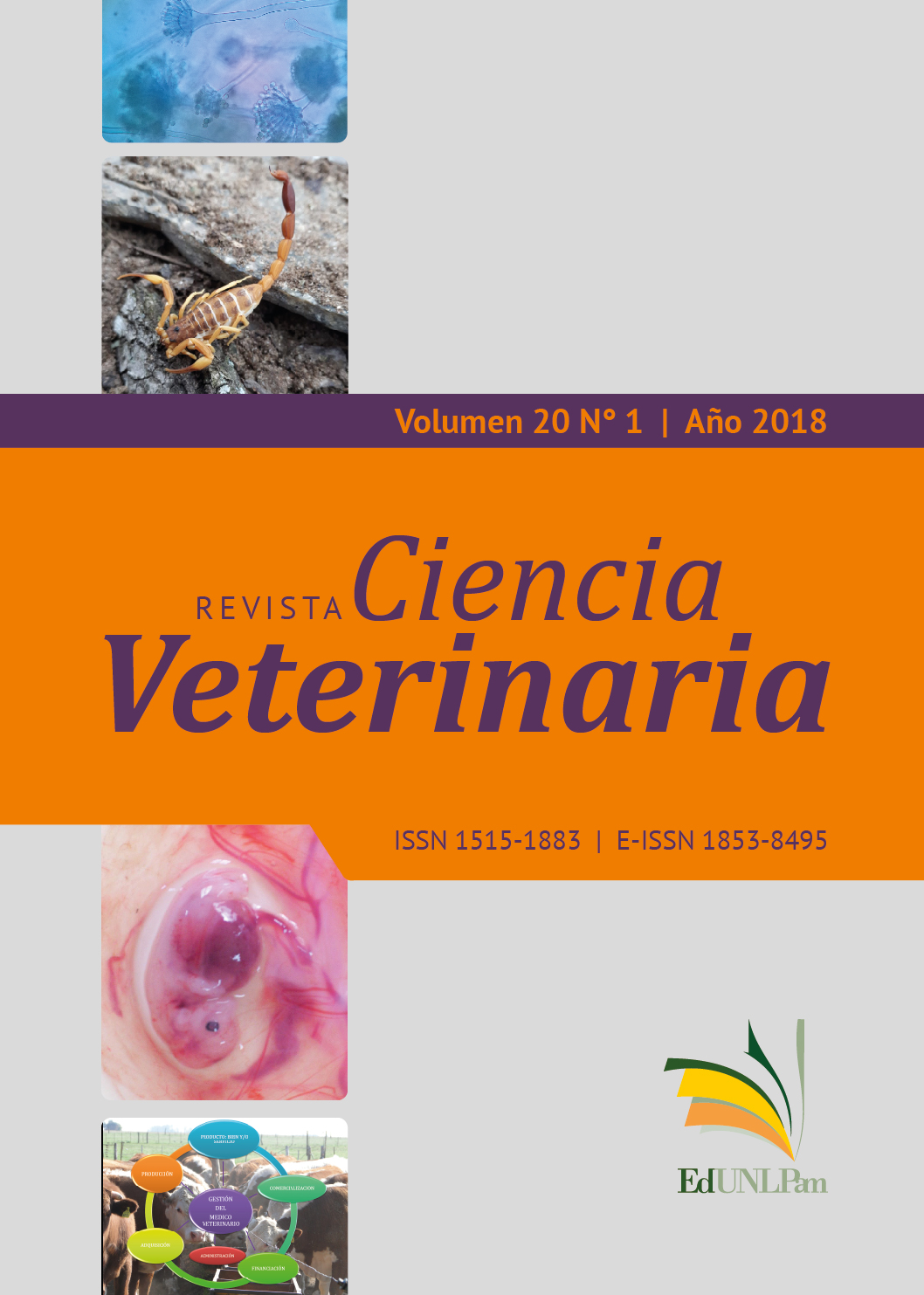Accidents by poisonous animals in the north of the province of La Pampa, Argentina. Epidemiological study
DOI:
https://doi.org/10.19137/cienvet-20182014Keywords:
poisonous accidents, report, epidemiology, prevention, antivenomsAbstract
They are of compulsory report in our country, because they produce serious consequences in Public Health. This project aims to epidemiologically describe accidents caused by poisonous animals in the north of La Pampa, identify the areas of highest risk and relate them to the distribution antivenoms centers and health institutions with intensive care. A retrospective descriptive epidemiological study was carried out to collect information about accidents with poisonous in the north of La Pampa province during the period 2005-2017. Primary and secondary data sources were used. A review of C2 reports of poisonous accidents from National Health Surveillance System (NHSS) and from records of the Dangerous Species for human and animal health Identification Services from FCV-UNLPam was carried out. Twentyeight interviews to community references and 10 health teams were done. According to the NHSS data, 6 cases of alacrism, 21 of arachnoidism and 3 of ophidism were recorded in the study period. According to the interviews, cases of poisonous animal accidents were described in different locations. The distribution centers of antivenoms, are according to the areas where the accidents were recorded. From the analysis of the data in the study period, we can conclude there are more underreporting than cases reported to the NHSS. In situations where data on accidents by venomous species are deficient, it is difficult to accurately determine the antidotes. This leads national health authorities to underestimate these needs, thereby reducing the distribution of anti-venoms. For this reason, it is important to strengthen the notification, systematization and dissemination of information to contribute to the monitoring and implementation of prevention measures and the treatment of accidents.Downloads
References
Ministerio de Salud de la Nación . Situación epidemiológica de accidentes por animales ponzoñosos. Argentina 2017 -2012. Boletín Integrado de Vigilancia Nº 175. 2013. SE 24. pp. 106-119
OPS . Informe final de la Consulta Técnica sobre accidentes con animales ponzoñosos en Latinoamérica. San Pablo. Brasil. PANAFTOSA. 27 a 29 de noviembre de 2007. Recuperado de: http://www.panaftosa.org.br/Comp/Noticias/doc/informe_final_ponzonoso.pdf
-Valderrama, R. Animales ponzoñosos en Latinoamérica. Rev. Biomédica Instituto Nacional de Salud. 2010; 30 (1): 5-9.
- Ministerio de Salud de la Nación. Boletín Epidemiológico Nacional Envenenamiento por animales ponzoñosos Ministerio de Salud de la Nación.2004; 67 -75.
- Ministerio de Salud . Boletín epidemiológico periódico.2007; Sep.- Oct. pp. 18 -19
- Ministerio de Salud de la Nación . Intoxicaciones e indicadores de efecto y exposición a agentes tóxicos. Normativa y tutorial para la vigilancia a través del sistema nacional de Vigilancia de la Salud 2014; – SNVS (C2 y SIVILA).
- Cabrerizo,S. et al. Loxoscelismo: epidemiología y clínica de una patología endémica en el país. Arch Argent Pediatr 2009; 107(2):152-159.
- Álvarez Parma, J. y Palladino, C. Envenamiento por escorpión en la Argentina. Arch. argent. pediatr. 2010; 108 (2): 161 -170.
- García, S. et al Guía de Centros Antiponzoñosos de la República Argentina. Ed. Ministerio de Salud de la Nación. 2008 Bs. As. Argentina
- Gómez. J. Accidente por animales ponzoñosos y venenosos: su impacto en la salud ocupacional en Colombia. Rev. Facultad Nacional de Salud Pública. 2011; 29 (4):419-431.
Downloads
Published
How to Cite
Issue
Section
License
Al momento de enviar sus contribuciones, los colaboradores deberán declarar , de manera fehaciente, que poseen el permiso del archivo o repositorio donde se obtuvieron los documentos que se anexan al trabajo, cualquiera sea su formato (manuscritos inéditos, imágenes, archivos audiovisuales, etc.), permiso que los autoriza a publicarlos y reproducirlos, liberando a la revista y sus editores de toda responsabilidad o reclamo de terceros , los autores deben adherir a la licencia Creative Commons denominada “Atribución - No Comercial CC BY-NC-SA”, mediante la cual el autor permite copiar, reproducir, distribuir, comunicar públicamente la obra y generar obras derivadas, siempre y cuando se cite y reconozca al autor original. No se permite, sin embargo, utilizar la obra con fines comerciales.







4.png)


7.png)



